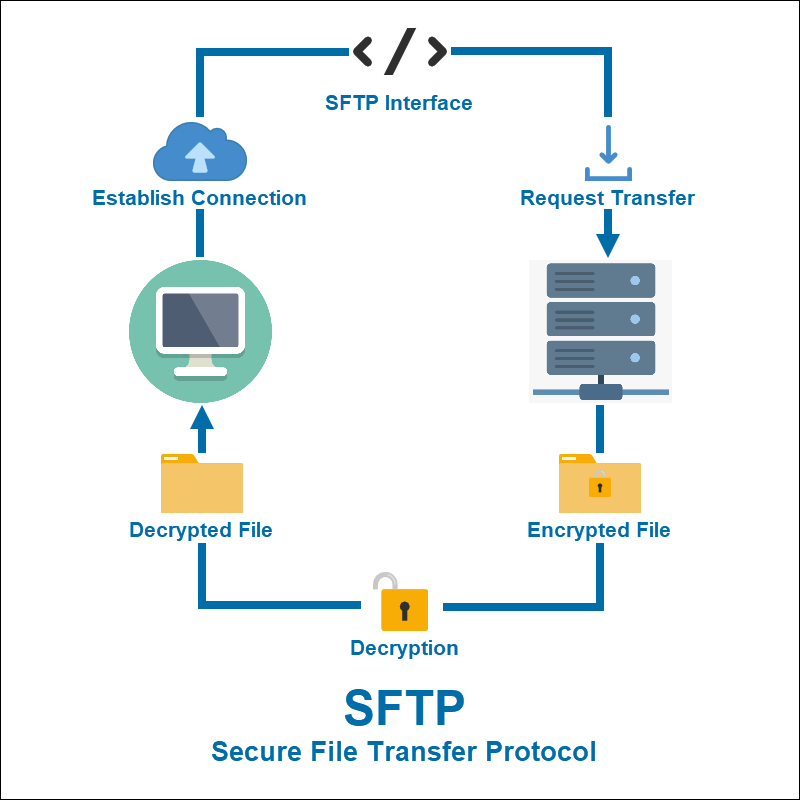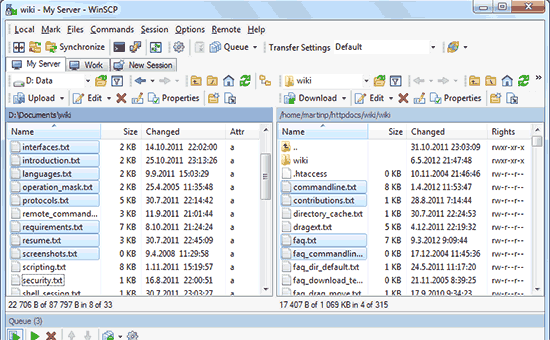
TLS and SSL are two types of encryption protocols. These types of encryption protocols use different types of algorithms to encrypt data. Although both protocols can be useful, there is a significant difference between them. Let's take a closer look at some of their main differences.
Authentication
TLS and SSL both use client authentication to restrict access to authenticated users. This authentication helps prevent attacks from external sources. It is accepted and widely used. However, client certificates must be installed on client computers and applications. This can be time-consuming for administrators and difficult for users.
Both protocols use different encryption cipher suites. TLS uses an advanced and more powerful set of ciphers. It also has perfect forward secrecy. They also use different methods to transmit warning and error messages. TLS uses encrypted alert message encryption, which is not accessible to anyone but the intended recipients.

Encryption
SSL and TLS have a fundamental difference in how they encode data. SSL uses asymmetric encryption to protect information sent over a network. This type of encryption uses a private key and a shared secret to protect data. Clients and servers negotiate these details before the first byte of data is transmitted, which makes this type of encryption reliable and secure.
TLS 1.0 contains a number of vulnerabilities. One such vulnerability is BEAST. The BEAST exploit takes advantage a well-known TLS 1.0 flaw called cipherblockchaining. An attacker can use this vulnerability to force servers to use weaker, 512-bit encryption keys.
Certificates
TLS and SSL certificates can seem confusing, especially if it is your first time using internet protocols. TLS security protocols are more advanced than SSL certificates, which provide the same level in encryption. Learn more about which protocol is best for your site.
SSL and TLS certificates can be digital certificates issued by certificate authorities. They are issued to the client with a cryptographic public key. This key is required for a secure connection. The certificate authenticates the certificate authority as the owner of the public key.

Implementation
SSL and the TL are security protocols that allow encryption of internet traffic. These protocols are based on cryptographic keys, which are computed over a Protocol message. They are also used in data integrity validation. Session keys are used to protect the connection by both client and server. Secure connections are established when both the client and server agree to exchange encrypted data.
TLS and SSL can be found in many free and open-source software projects. OpenSSL and CyaSSL are two common implementations of these protocols. These libraries are embedded in many web browsers. These libraries are also used by many popular software projects to support SSL and TLs. These libraries support SSL over TCP, a reliable and datagram-oriented transportation protocol.
FAQ
WordPress: Is it a CMS or not?
Yes. It is a Content Management System (CMS). CMS is a way to manage your website content without having to use an application such Dreamweaver/Frontpage.
WordPress is absolutely free! Hosting is all you need, and it's usually free.
WordPress was originally created to be a blogging platform. But WordPress now offers many more options, such as eCommerce sites or forums, membership websites and portfolios.
WordPress is easy and quick to install. It is necessary to download the installation file from their site and upload it on your server. You can then visit your domain name using your web browser to log in to your new website.
After installing WordPress you will need to create a username/password. After logging in, you will see a dashboard that allows you to access all your settings.
This is where you can add pages or posts, images and links to them. If editing and creating new content is easier for you, skip this step.
You can, however, hire a professional Web designer to handle the whole thing if your preference is to work with another person.
Can I build my website using HTML & CSS?
Yes! If you've been following along so far, you should now understand how to start creating a website.
Now that you know how to create the structure of a website, you'll also need to learn some HTML and CSS coding.
HTML stands for HyperText Markup Language. It is similar to writing a recipe. It would include ingredients, instructions, as well as directions. HTML is a way to tell a computer which parts are bold, underlined, italicized or linked to other parts of the document. It is the language of documents.
CSS stands for Cascading Style Sheets. Think of it like a style sheet for recipes. Instead of listing out each ingredient and instruction, you write down general rules for things like font sizes, colors, spacing, and more.
HTML tells the browser how to format a web page; CSS tells it how to do it.
Don't panic if either of these terms are confusing to you. Follow these tutorials to create beautiful websites.
What is a website static?
A static website contains all content stored on a server that visitors can access via web browsers.
The term "static", as it is sometimes called, refers not to dynamic features such changing images, videos, animations, etc.
This site was initially designed for corporate intranets, but it has been adopted by individuals or small businesses who desire simple websites that don't require complex programming.
Static websites are becoming more popular due to their ease of maintenance. They're easier to update and maintain when compared to a fully-featured website with many different components (such as blogs).
They also load more quickly than dynamic counterparts. This makes them ideal for users on mobile devices or those with slow Internet connections.
A static website is more secure than its dynamic counterparts. A static website is impossible to hack. Hackers have only access to data stored in a database.
There are two main methods to create static websites:
-
Utilizing a Content Management System.
-
Creating a Static HTML Website
It depends on what your needs are. I recommend a CMS if you're just starting to create websites.
Why? It gives you full control of your website. A CMS eliminates the need for a professional to set up your site. You just need to upload files to your web server.
You can still learn to code and make a static website. However, you will need to put in some time to learn how to program.
What is a website static?
A static site can be hosted anywhere. This includes Amazon S3, Google Cloud Storage. Windows Azure Blob storage. Rackspace Cloudfiles. Dreamhost. Media Temple. You can also deploy a static website to any platform that supports PHP such as WordPress, Drupal Joomla! Magento PrestaShop and others.
Static web pages can be easier to maintain as they don’t need to send requests back and forward between servers. A static web page loads faster as there is no need to forward requests back and forth among servers. Static web pages are better for small businesses that don't have enough resources or the time to maintain a website.
Statistics
- The average website user will read about 20% of the text on any given page, so it's crucial to entice them with an appropriate vibe. (websitebuilderexpert.com)
- Is your web design optimized for mobile? Over 50% of internet users browse websites using a mobile device. (wix.com)
- When choosing your website color scheme, a general rule is to limit yourself to three shades: one primary color (60% of the mix), one secondary color (30%), and one accent color (10%). (wix.com)
- It enables you to sell your music directly on your website and keep 100% of the profits. (wix.com)
- Did you know videos can boost organic search traffic to your website by 157%? (wix.com)
External Links
How To
Drupal 7: How to Use It for Web Design
Drupal is one of most well-known Content Management Systems (CMS), available today. It was developed in 2003 by Dries buytaert of Belgium. Named after the names of its two developers, Dirk Buijtewaard (from Belgium) and Pierre d'Herbemont (from France). Drupal was opened source in 2005. Since then there have been many versions. Today, Drupal is used by many websites and companies around the world.
Drupal is extremely popular among website owners due to several reasons. First, it is free to download and install. It's also very easy to customize it and extend it. It is well documented. Fourth, the forum and IRC channels offer great support. Fifth, it can be expanded via modules. Sixth, it can support multiple languages. It can be easily customized. It can be scaled. It is secure. Tenth, it's reliable. Finally, Drupal is supported by the entire community. Drupal is the perfect choice for your next projects because of these features.
You might wonder what makes Drupal stand out from other CMS platforms. The answer is simple. Drupal is an Open-Source Content Management System. Drupal is completely free and can be downloaded freely. Drupal gives you full control over your website. You can add pages and remove them.
Drupal is an option for those who lack the technical skills required to create websites. You don't have to be a programmer to build your website, unlike other CMS. To use Drupal, you only need to understand the basics. Then you will be able to modify your website according to your needs.
Drupal offers many plugins and themes that can be used to enhance your site's functionality. These plugins can be used to improve your site's functionality. You can use the Contact Form module, for example, to collect visitor contact information. Also, you can use Google Maps to display maps on your website. Drupal comes pre-made in thousands of templates. These templates give your website a professional look.
Moreover, Drupal is highly flexible. You can add new modules and even replace existing ones without worrying about compatibility issues. You can do it quickly if you want to integrate social media into your website. You can also create RSS feeds and e-mail subscriptions.
Drupal can also be customized. Drupal can be customized with custom fields and forms. You can also manage users. Drupal can be used to create complex layouts.
Drupal is stable and reliable. It is stable and scalable. Also, it offers excellent security features. Drupal is an excellent web development platform.